
Helicobacter pylori (HP) is characterized as a gram-negative bacterium with a considerable reach, affecting more than 50% of the world’s population.1 The genesis of HP is associated with gastric B-cell lymphoma, gastric adenocarcinoma, peptic ulcers, non-atrophic gastritis, atrophic gastritis, and micronutrient deficiencies to include B12, iron, folic acid, vitamin C, vitamin A, and vitamin E.1(12809,12811)
As such, it is imperative to develop interventions which control the growth, proliferation, and downstream effects of HP. One such solution could be the inclusion and administration of botanicals such as oregano and savory. As a means of appreciating the contribution and efficacy of botanicals in treating HP, the following will consider the same in greater detail.
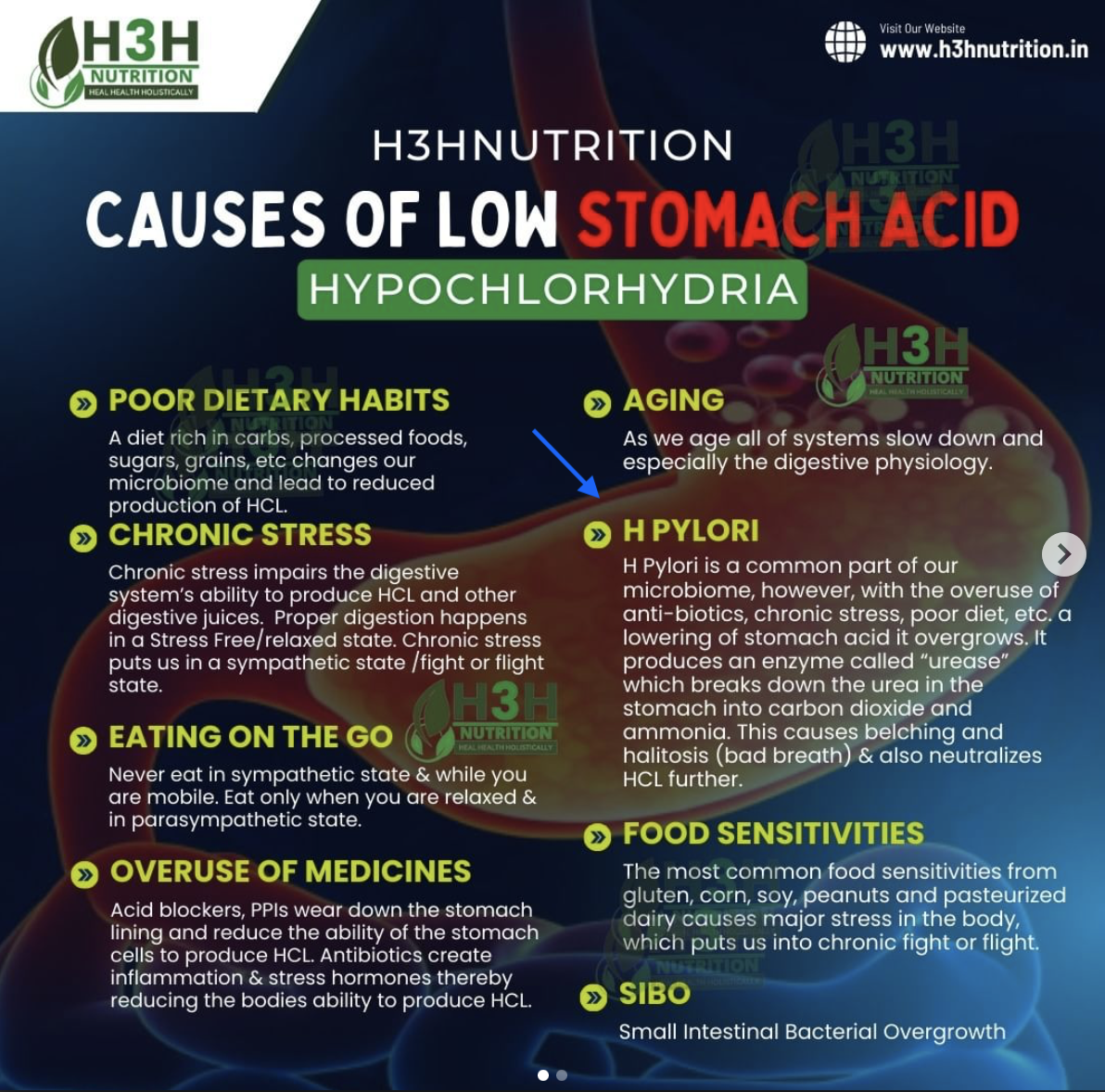
HP has the capacity to colonize the entire gastric epithelium and produces urease; an enzyme involved in the production of ammonia which neutralizes the acidic environment of the stomach and allows HP to continue its spread with less interference.1(12811) HP also produces enzymes such as phospholipase A2, C, and glycosulfatase all of which contribute to deeper gastric and mucosal damage.1(12811)
Ultimately, such pathophysiological cascades produces a strong and perpetual inflammatory response along the gastric epithelium as well as an upregulation of inflammatory cytokines to include interleukin 8 and interleukin 1β.1(12811) Considering the widespread effects of HP, it is essential to develop strategies to manage its proliferation. As such, the following sections will consider, in greater detail, conventional treatments and the potential application of two botanicals used in tandem; oregano and savory.
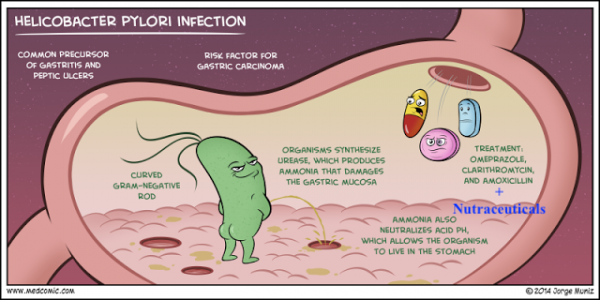
Most conventional treatments for HP usually require multiple drug regimens since said bacterium is already resilient and conditioned to the harsh environment of the stomach.2 As such, antibiotics such as clarithromycin, amoxicillin, metronidazole, and tetracycline are often combined with acid-lowering drugs such as proton pump inhibitors/bismuth compounds to destroy HP.2(2)
Although such treatments can be effective, antibiotics and acid-lowering drugs can produce secondary conditions such as small intestinal fungal overgrowth.3 Furthermore, such strategies can also increase the prevalence of antibiotic resistant microbes in addition to a low rate of compliance.2(2) Therefore, novel treatments and interventions are paramount and over the last 15 years, aromatic plants have become increasingly popular as potent antibacterial agents and have produced encouraging outcomes.
LINK: Small Intestinal Fungal Overgrowth and Nutritional Interventions
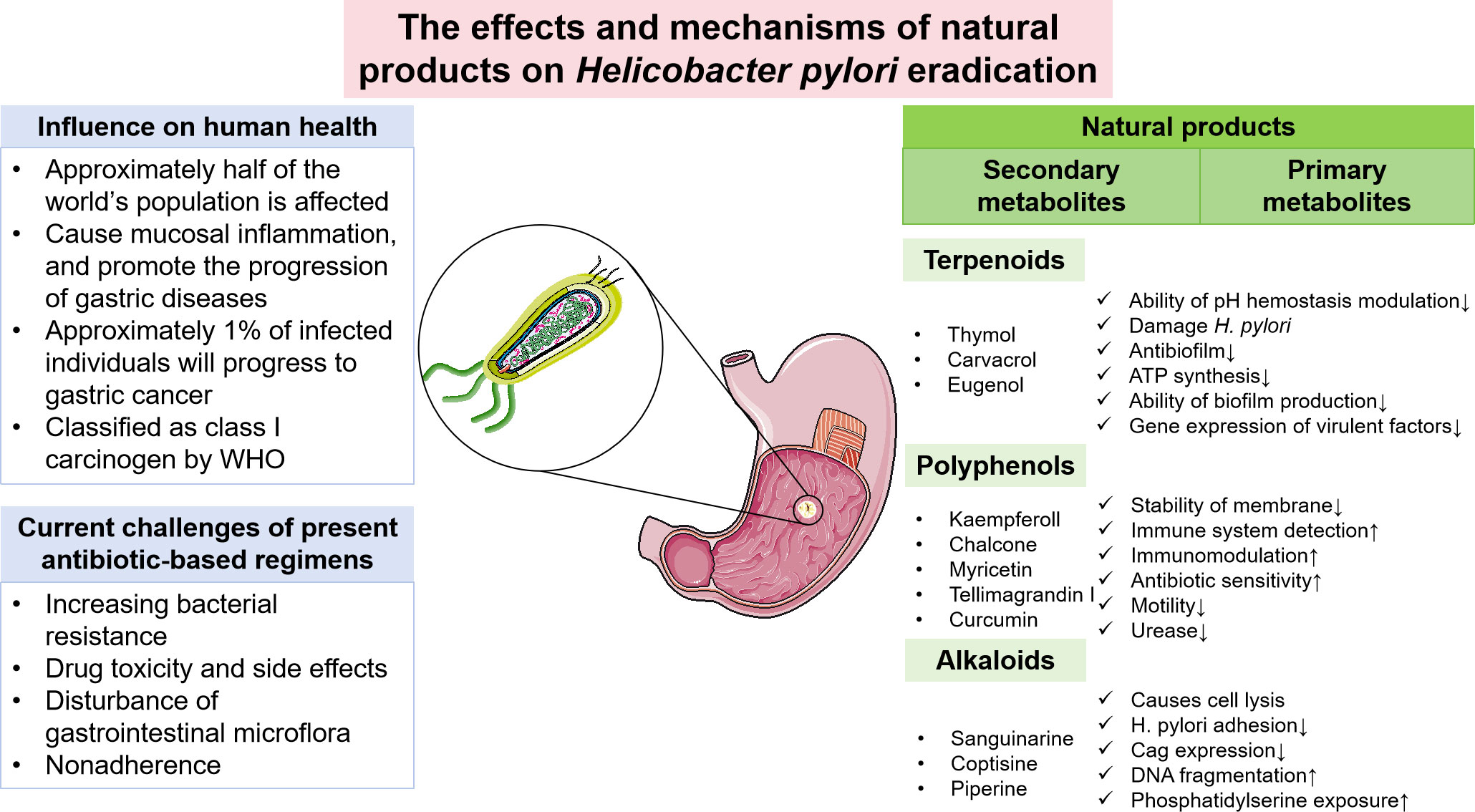
Harmati et al2(2) researched 9 plant species that were considered from three families (Lamiaceae, Apiaceae, and Asteraceae). Interestingly, each plant was tested individually against HP to determine the degree of influence of each one. Then, the most effective botanicals were combined to consider potential synergistic effects.2(2)
The researchers noted that the strongest HP inhibitory effect came from the fusion of Satureja hortensis (summer savory) and Origanum vulgare subsp. hirtum (Greek oregano), and such efficacy was thought to derive from the terpenoid compounds found between said plants.2(2) Based on said findings, the study by Harmati et al2(2) implemented a 2:1 mixture of savory and oregano, respectively, for in vivo (living organisms) therapeutic examinations and in vitro (i.e. cell) cytotoxicity and to confirm its anti-H. pylori activity. The following will explore the study of the researchers and results in greater detail.
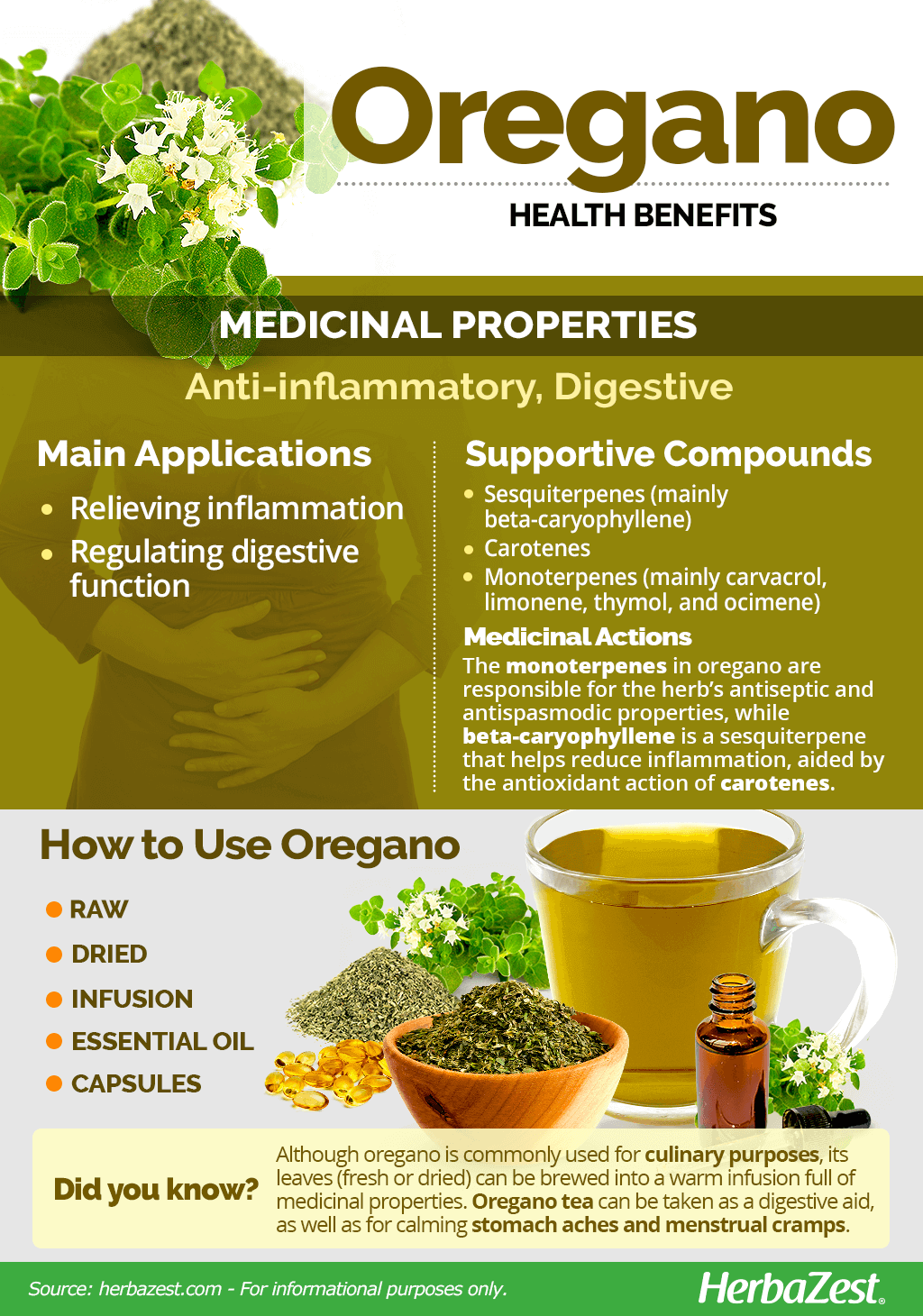
Pathogen free mice (ages 7-8 weeks) were obtained for examination of savory/oregano essential oils against HP. One group of mice would receive the essential oil combination while the other group of mice remained an uninfected/untreated control group (also known as a negative control group).2(2)
Infected mice (via a feeding needle with a bacterium suspension) were randomly divided into 3 groups; one group remained untreated (known as a positive control), another group was treated with the 2:1 essential oil mixture (43.75 μL/kg body weight) while the last group (placebo) received sunflower oil (the diluent of the 2:1 mixture).2(2)All treatments were carried out using 50 μL volume, 3 times over a 5-day period via feeding needle.2(2) After a week passed, all mice were sacrificed followed by removal of the stomach and retrieval of blood samples for analysis.
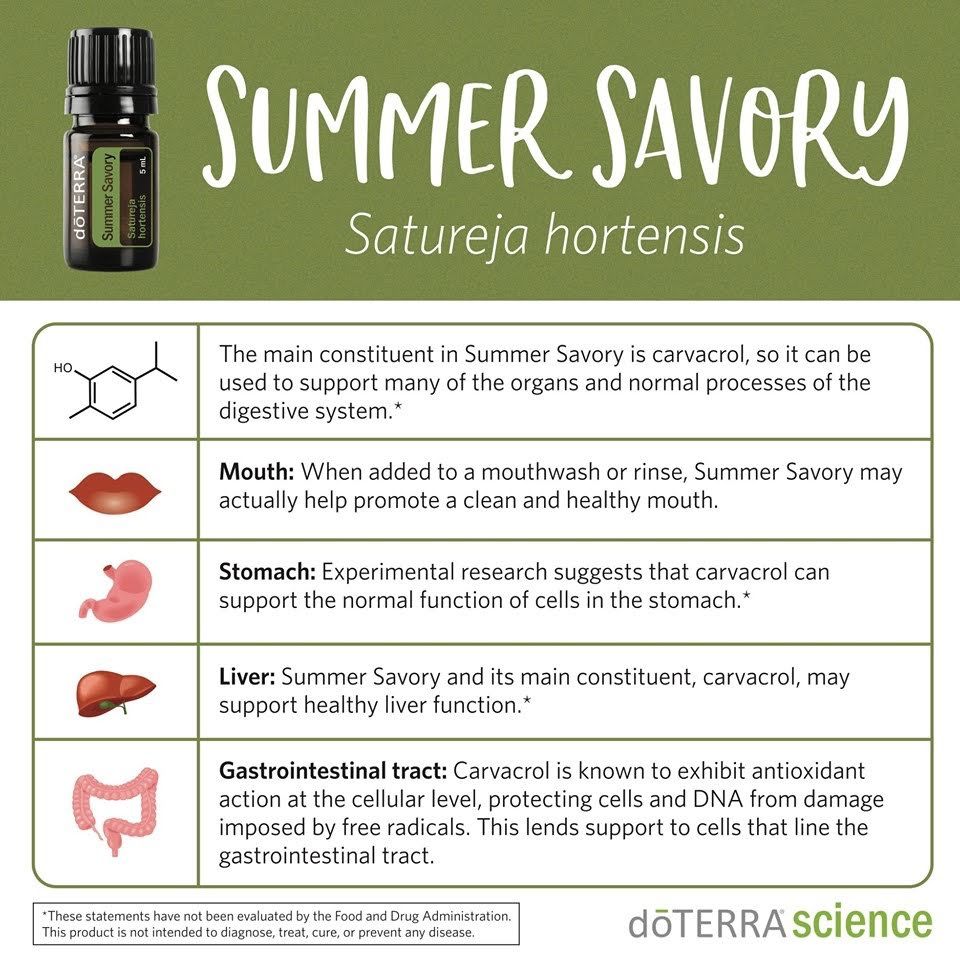
Within the HP-infected mice group undergoing the essential oil mixture, a 70% eradication of said bacteria was found with only 30% of the infected/treated group remaining positive for HP.2(4) Such was confirmed using the PCR (polymerase chain reaction) technique; a process which identifies DNA/RNA unique to each microbe, like a fingerprint of an individual.4 Furthermore, no change was seen in the sunflower-treated group or the negative control group.
Such results show promise using the 2:1 essential oil mixture for HP and researchers attributed said efficacy against HP from the synergistic effects (terpenoids) of combining essential oils.2(5) Not only did the essential oil mixture prove effective against HP, no side effects or immune responses were recorded; an occurrence less prevalent when using antacids and antibiotics.2(5) Ultimately, such results support further research into official HP therapies.
In conclusion, HP is characterized as a gram-negative bacterium with a considerable reach, affecting more than 50% of the world’s population. The genesis of HP is associated with gastric B-cell lymphoma, gastric adenocarcinoma, peptic ulcers, non-atrophic gastritis, atrophic gastritis, and micronutrient deficiencies to include B12, iron, folic acid, vitamin C, vitamin A, and vitamin E. Although antibiotics and antacids can help control HP infection, they often produce secondary side effects and antibiotic-resistance bacteria. Essential oils, however, are gaining inertia as a viable alternative to traditional pharmaceutical interventions with the advantage of little to no side effects. Ultimately, such botanicals, like oregano and savory, could hold promise in treating HP and improving the health, wellness, and longevity of individuals afflicted with such a condition.
References
1. Franceschi F, Annalisa T, Teresa DR, et al. Role of Helicobacter pylori infection on nutrition and metabolism. World J Gastroenterol. 2014;20(36):12809-12817. doi: 10.3748/wjg.v20.i36.12809.
2. Harmati M, Gyukity-Sebestyen, Dobra G, et al. Binary mixture of Satureja hortensis and Origanum vulgare subsp. hirtum essential oils: in vivo therapeutic efficiency against Helicobacter pylori infection. Helicobacter. 2017;22(2):1-8. doi:10.1111/hel.12350.
3. Erdogan A, Rao SSC. Small intestinal fungal overgrowth. Curr Gastroenterol Rep. 2015; 17(4):1-7. doi:10.1007/s11894-015-0436-2.
4. Lord RS, Bralley JA. Laboratory Evaluations for Integrative and Functional Medicine. 2nd ed. Duluth, GA: Genova Diagnostics; 2012.
-Michael McIsaac
